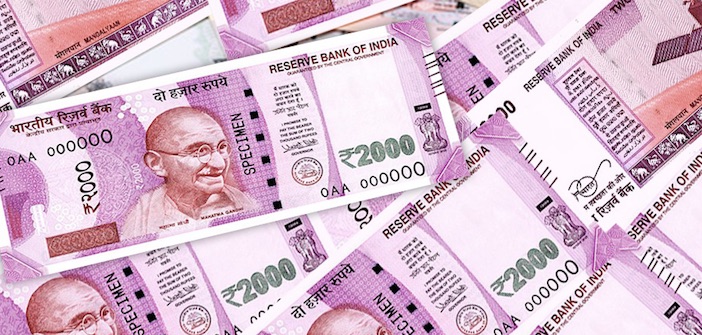Rupee dips again
August 31, 2018 | Expert Insights

The rupee fell to a record 71 per dollar in opening trade on Friday, tracking weakness in almost all other Asian peers as the latest round of U.S.-China trade tensions.
The rupee has reached its lifetime low of 70.93 just before closing on Thursday.
Background
The Indian Rupee (INR) is the official currency of India which is a fiat currency and partially convertible. A country’s currency is linked to their economy and the policies that govern the economy. Over the years the value of any currency has depended on factors like inflation, employment, interest rate, growth rate, trade deficit, foreign investment and several macroeconomic policies. As a governing body, the RBI would manage the value of the rupee by controlling the supply which would either make it cheap or expensive.
The Indian rupee collapsed to a fresh record low of 71 against the US dollar for the first time ever by slipping 26 paise on Friday.
Analysis
The fall in Indian currency is due to the persistent demand for the US currency amid rising crude prices. However, a weakness in almost all other Asian peers also gave a boost to the dollar on Friday.
The partially convertible rupee was trading at 70.93/94 per dollar, compared with its previous close of 70.74. It touched 71 per dollar in opening deals before recovering slightly on the back of dollar sales by state-run banks.
Traders have said that the Reserve Bank of India was likely to sell dollars through state-run banks to prevent a sudden sharp fall. Traders do not expect any major intervention as the fall has been in line with fundamentals.
The recent rupee weakness has largely to do with the risk-off sentiment associated with emerging markets (EM) However, India’s fiscal and current account deficits make it more vulnerable. If left unchecked, it presents a dangerous spiral. In the worst-case scenario, a further depreciation leading will lead to a higher inflation expectation. So far, growing fears about rising inflation and consistent outflow of foreign funds from the domestic equity market has also impacted the domestic currency trading.
The steep fall is also a result of rising crude oil prices in the international market. Emerging market currencies are also under pressure which could have translated into the fall in value.
Globally, there is a lack of investor confidence in the Turkish lira and Chinese offshore yuan which is putting the currencies under stress. The request by the Argentine government to the IMF for early release of USD 50bn loan started the downslide in the Argentine Peso. Read more about Argentina’s request for a quicker bailout here.
The RBI is intervening very selectively to contain volatility. The RBI is unlikely to intervene aggressively as the rupee is still overvalued and currencies of EMEs are depreciating sharply. The government also seems to be comfortable even if the rupee depreciates further. India’s fiscal deficit and GDP data due to release today will provide further direction to the rupee.
Additionally, Asian shares came under renewed pressure on Friday as US President Donald Trump was preparing to step up a trade war with Beijing - this sent Chinese stocks lower and partially erased gains made in this week's global rally.
The rupee has been Asia’s worst performing currency, losing close to 10% of its value so far this year.
Assessment
Our assessment is that the rupee will continue to underperform until oil prices stabilise in the short term. We feel that the RBI will continue to sell its Dollar reserves in a staggered approach in order to avoid a shock to the rupee. We believe that India’s monetary and fiscal policymakers need to consider stabilising internal currencies flows as a short-term fix.








Comments